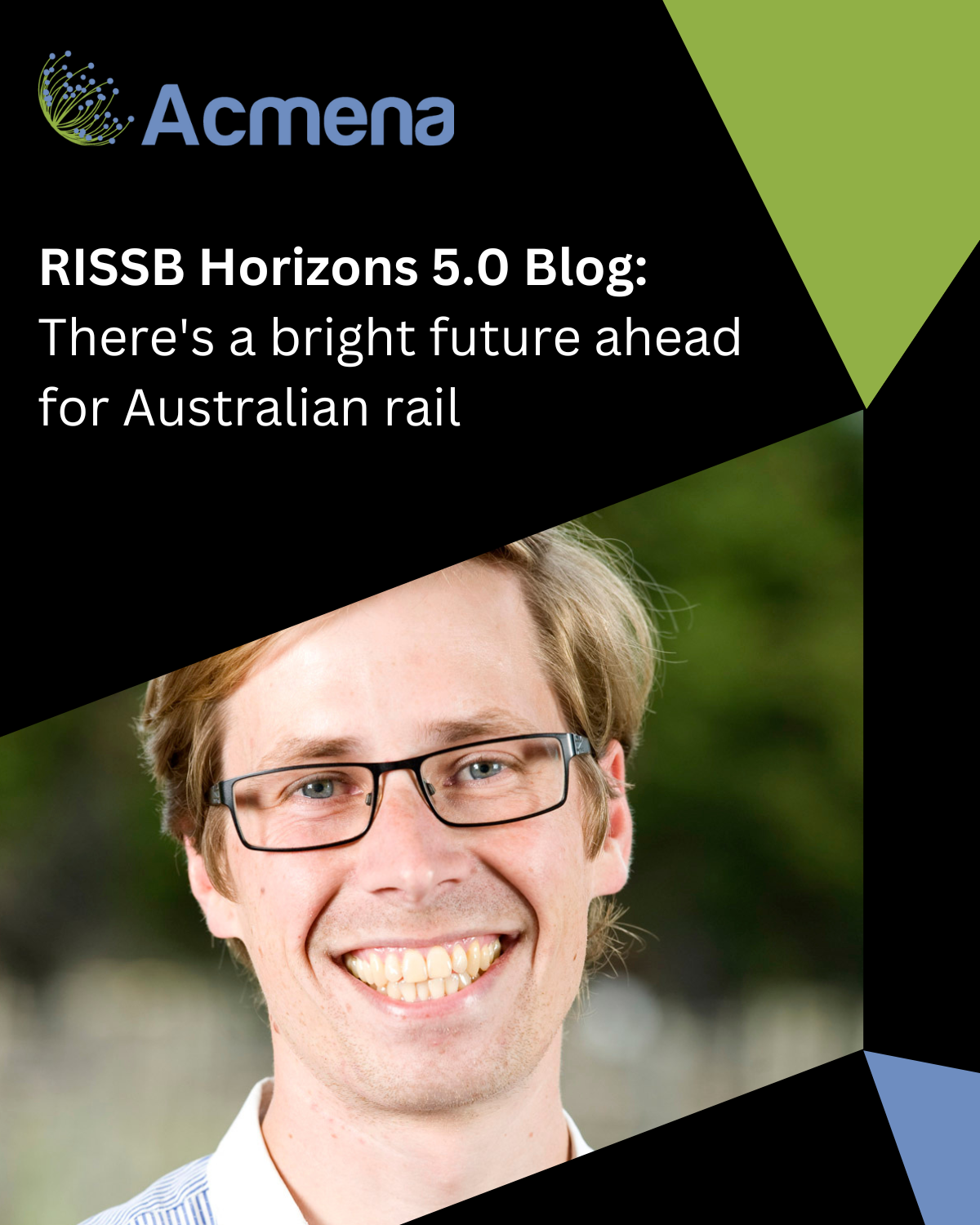Last week, several of the Acmena team including Pravin Hiremath, Matthew Manger and myself, attended the RISSB Horizons program in Brisbane.
After kicking off in Melbourne in February, this was the program’s second in-person conference and consisted of a number of technical, strategy and planning, and risk management sessions. In similar fashion to the first conference, the sessions proved to be particularly informative and I was able to come away with a few personal insights.
The first of which was just how much both the transport industry and the movement patterns of the population have changed since the pandemic. A rise in the proportion of people working from home has meant that public transport now needs to compete to a greater degree with other modes of transport such as rideshares, e-scooters, cycling, driving and other mobility solutions.
Perhaps now more than ever, reliability, punctuality, service and cost are the key differentiators that rail networks can offer to their customers over other modes of transport.
With the landscape continually changing, long term planning is probably more important than ever to the success of public transport. In particular, the sessions emphasised the impact of the forecasted increase to the SE QLD population of over 1 million people, as well as the influx that will occur due to the 2032 Olympic and Paralympic games.
It was also illustrated how government planners are working to fulfil the transport needs of the population, where assisted mobility access will certainly be a key consideration for the athletes and the number of mobility-impaired passengers will be a lot higher than usual.
As an end user of public transport, it was a fascinating insight into understanding how detailed plans for public transport can be developed for many years in advance. There will many opportunities and projects for current young professionals to fulfil transport’s needs in the future. It emphasises the need for planners to collaborate with other government bodies (local, state and federal), infrastructure builders and other organisations to ensure that public transport needs of the population are met.
Anyone who uses the public transport system will have an opinion on how effective it is and how it needs to be improved. For me, as someone who both uses and works on the rail network, these sessions really emphasised that there are many interesting but technically challenging problems to be solved on a railway network, such as improving maintenance regimes, developing risk and failure models, or using digital models to build and simulate a railway.
Perhaps more importantly, it illustrated that while there are many new techniques and technologies available, adoption must be undertaken industry wide, not just on an individual project basis. This will be crucial to improve the railway’s productivity and efficiency, and for large projects help guarantee on time delivery.
The final thing that I took away from the conference is that there is an impressive calibre of young professionals working within the railway industry that are taking on the challenges facing the railway industry and are passionate and capable of solving its problems. If the industry can retain the burgeoning talent rising within its ranks, then Australia’s rail networks should be in good hands for years to come.

